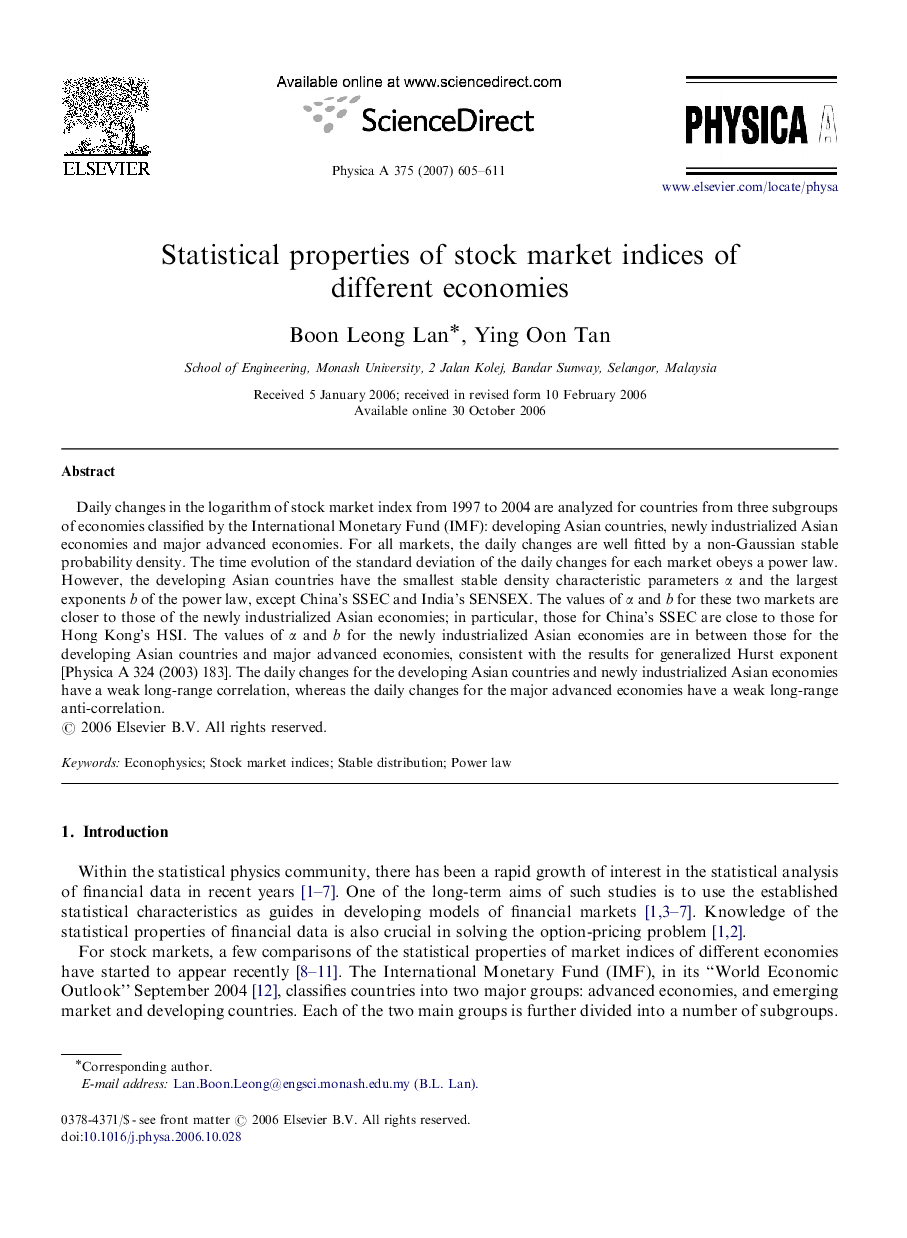| Article ID | Journal | Published Year | Pages | File Type |
|---|---|---|---|---|
| 977036 | Physica A: Statistical Mechanics and its Applications | 2007 | 7 Pages |
Daily changes in the logarithm of stock market index from 1997 to 2004 are analyzed for countries from three subgroups of economies classified by the International Monetary Fund (IMF): developing Asian countries, newly industrialized Asian economies and major advanced economies. For all markets, the daily changes are well fitted by a non-Gaussian stable probability density. The time evolution of the standard deviation of the daily changes for each market obeys a power law. However, the developing Asian countries have the smallest stable density characteristic parameters α and the largest exponents b of the power law, except China's SSEC and India's SENSEX. The values of α and b for these two markets are closer to those of the newly industrialized Asian economies; in particular, those for China's SSEC are close to those for Hong Kong's HSI. The values of α and b for the newly industrialized Asian economies are in between those for the developing Asian countries and major advanced economies, consistent with the results for generalized Hurst exponent [Physica A 324 (2003) 183]. The daily changes for the developing Asian countries and newly industrialized Asian economies have a weak long-range correlation, whereas the daily changes for the major advanced economies have a weak long-range anti-correlation.
